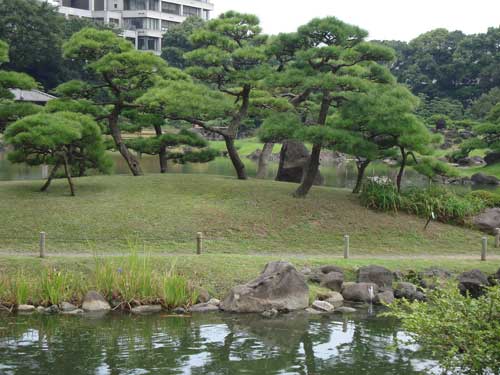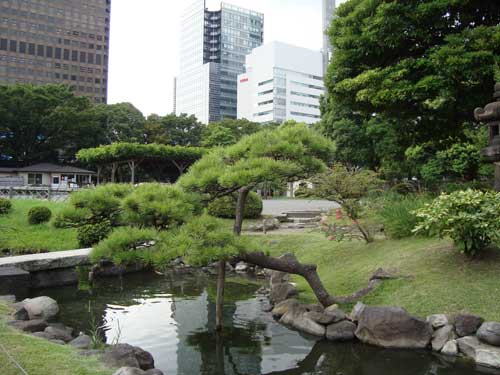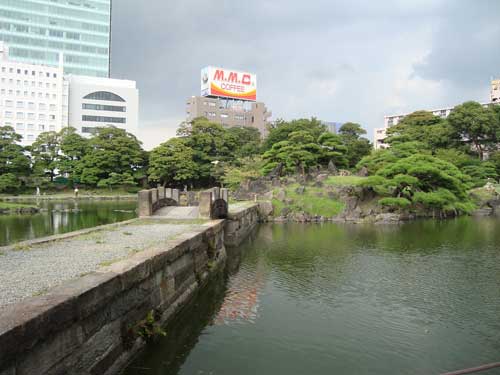
Traditional Japanese garden Kyu Shiba Rikyu dates to 1678 when land reclaimed from Tokyo Bay became the residence of Okugawa Tadatamo, an official of Tokugawa Shogunate. Kyu Shiba Rikyu is one of Tokyo’s oldest gardens, along with Koishikawa Korakuen. Kyu Shiba Rikyu was destroyed by fire in the 1923 earthquake, rebuilt and gifted by the Emperor as a city park.

Today this stroll garden with a focal pond and two small islands sits steps from Hamamatsuchou station, and surrounded by office buildings, bullet trains, the JR Yamanote line, a monorail, elevated train, and two elevated highways. The pond reflects manicured black pines, office towers and billboards. There is also a very elegant archery range with grass lawn, tatami seating area, and targets inked by hand. (See photos after the jump below).

The pond and island were created over 400 years ago to recall China’s Seiko Lake (Xi Hu) and Reizan sacred mountain in Hangzhou (Zhejiang). Like at Koishikawa Korakuen, Kyu Shiba Rikyu was created at a time when garden design, philosophy, literature, and painting all borrowed heavily from China. Given our last century’s conflicts between Japan and China, is it too much to hope for artistic borrowings in this century?
A wonderful garden diplomacy would be a photographic exploration of these 400 year old Japanese gardens and the Chinese landscapes that inspired them. How have the natural and designed environments changed? What contemporary landscapes could inspire today’s art exchanges?